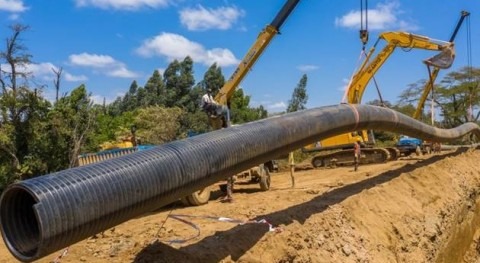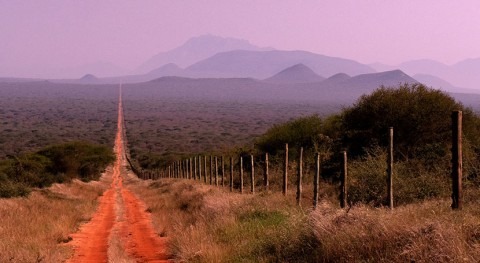Taking a tour along the roads of some densely populated estates and slum areas in Nairobi and there is usually one common feature, open drainage channels.
Open drainage channels are mostly found in urbanised areas and used for the discharge of rainwater, especially during storms. Rainwater collected by these channels is often directed to rivers or other water courses.
Drains are meant to serve a good purpose in helping to prevent flooding, however, when they are left open, solid and domestic waste can collect in them and lead to blockages, which in turn can threaten health.
Numerous environmental hazards are also associated with open drainage channels, including ground water contamination, impact on disease burden, decrease in soil productivity, contamination of vegetables and crops which become unhealthy for human consumption especially when consumed in raw form.
The quality of water is greatly affected by open drainage system in urban and peri-urban areas of the country. Household open drains are allowed to flow into water sources, recharging ground water and spreading ground water pollution.
The deterioration in water quality causes serious illnesses including typhoid, cholera, hepatitis A and E, polio, dysentery among others through waterborne bacteria, viruses and protozoa, while water-related diseases like malaria and dengue fever spread due to environmental pollution. In some cases, this leads to deaths.
Kenya failed to achieve its Millennium Development Goal for increasing access to water and sanitation. Only 30% of Kenyans have access to improved sanitation or the use of sanitation facilities that hygienically separate excreta from human contact. This means that approximately 30 million Kenyans are still using unsafe sanitation methods such as rudimentary types of toilets, with nearly six million defecating in the open.
Access to improved sanitation is a major challenge both in urban and rural areas. According to a World Health Organisation and UNICEF Joint Monitoring Programme, it costs the country an estimated US$324mn annually for the gaps in its sanitation and hygiene services.
A report by the Ministry of Water and Sanitation indicates that Kenya spends over Ksh 27 billion annually for treatment of these water-related diseases occasioned by poor sanitation.
The filthy condition of many streets in Nairobi for instance is attributable to the construction of open drainage systems
The situation is worse in informal settlement areas like Kibera and Mukuru where open drains present a huge health hazard to the residents. In combination with poor or non-existent water and sanitation systems, open drains present a recipe for disaster which is always present and can erupt at any time and wreak havoc amongst the populations.
One does not need to be a scientist to know what would happen in case of a disease outbreak. The improvement of proper water distribution and repairing the broken water pipes coupled with constructing a good drainage system is the key to fighting common illness in the slums.
In Mukuru for instance, less than 1% of households have access to a private in-home toilet as their main sanitation option. In fact, some households spend up to 70% of their income on food and sanitation (mostly toilet use fees).
Now considering most of the residents living in these slum areas survive on slightly over a dollar a day, managing their water and sanitation needs becomes very expensive, more reason why flying toilets are common.
The human waste ends up in the openly dug drainage systems which winds and curves between houses, and often sinks below them and merges with the content of broken sewage lines (sewer lines burst and discharge above ground, mixing with the content of open drainage), and creating pools of standing water.
Due to a lack of proper sanitation infrastructure, open drains are often used as an alternative to proper toilets. Faeces, urine and other waste – directly flow into the drains when it rains and then onto rivers.
Open drainage is the main collector of garbage which subsequently clogs, thus creating floods during rains. All of this damaging debris flows downwards, usually towards rivers that pick it up and carry it further downstream, polluting the environment sometimes hundreds of kilometers away.
At the same time, the clogging results in floods that in turn destroy roads. The rate of road deterioration increases with an increase in granular moisture content
Some open drains are located alongside major roads within urban areas, and if they are poorly maintained, the water may overflow onto the roads. The excess moisture extensively reduces the shear strength of the materials that are unbound and causes differential swelling on the subgrade soils that ultimately weaken the roads and pavements.
The filthy condition of many streets in Nairobi for instance is attributable to the construction of open drainage systems. For some residents, open drainage presents an alternative to refuse dumps. All these contribute to the notoriously unsanitary and disease-ridden conditions of inner-city estates.
The construction of exposed drainage systems is a culture that has been sustained over the decades. Nairobi is prone to flooding, and it is also a place that is supremely notorious for blocked drainage systems. The town planners, do not seem to recognise that open drains use land, which means that there are no pavements or walkways for pedestrians, often forcing them onto the roads and placing them in danger of being hit by motorists.
The safety of people and animals is also at risk due to open drains in cases of floods. There have been cases where people and even animals have died after being washed away and drowning in open drains
It is therefore vital to take positive action to save lives and billions of shillings spent due to ailments and the destruction caused by open drainage channels.
Bringing innovative solutions, providing and maintaining safe off-site and decentralised sanitation systems cannot happen without new investment and human technical capacity, particularly considering the growing population density in urban centres.
Designing and constructing drainage systems require expert advice from engineers to make sure that water flows away efficiently and safely and is disposed of in a surface watercourse or soakaway. Drainage installed by one community should not create problems for other communities downstream, nor should it affect ecologically important sites.
Solutions such as the use of large diameter plastic pipes offer long term remedies to the stormwater management and sanitation problems that seem to bedevil the most informal urban sites and poorly planned residential areas.
To save lives and raise living standards, we must solve these issues urgently.







